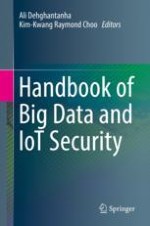2019 | OriginalPaper | Chapter
Distributed Filesystem Forensics: Ceph as a Case Study
Authors : Krzysztof Nagrabski, Michael Hopkins, Milda Petraityte, Ali Dehghantanha, Reza M. Parizi, Gregory Epiphaniou, Mohammad Hammoudeh
Published in: Handbook of Big Data and IoT Security
Publisher: Springer International Publishing
Activate our intelligent search to find suitable subject content or patents.
Select sections of text to find matching patents with Artificial Intelligence. powered by
Select sections of text to find additional relevant content using AI-assisted search. powered by
